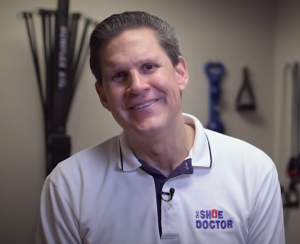Custom orthotics tend to have a life span of anywhere between 1 and 5 years, however this depends on usage, materials, and changes in foot health or structure. What most people don’t realize is that day-to-day wear, high activity, or weight shifts can reduce the life of their orthotics. A few of the usual suspects — such as worn padding, less foot support or pain — often indicate it’s time to consider a new pair. Individuals with medical conditions that evolve may require the replacement of orthotics at a faster rate. To maintain foot comfort and support, having your orthotics checked annually by a healthcare professional helps identify wear or fit problems. In the following, discover what to look out for and how to determine when to swap out your orthotics.
Key Takeaways
- Custom orthotics typically last two to four years, but their longevity is influenced by factors like material, activity level, weight, and usage.
- Be sure to discuss your lifestyle with your orthotist to ensure you get the right amount of support and cushioning for your orthotics to last longer.
- Periodic self-inspection and visiting a specialist are necessary to identify wear signs, cracks, thinning padding, or less support and determine if replacement is required.
- More active people or those with more body mass may experience quicker wear and should check their orthotics more often to maintain support.
- Constant pain, discomfort, or shifts in foot biomechanics with orthotics are obvious indicators that a replacement or professional check is in order.
- To make custom orthotics last longer, take proper care, rotate pairs, avoid heat exposure, and get yearly checkups.
How Long Do Custom Orthotics Last?
Custom orthotics usually last between 2 to 4 years, with some lasting up to 5 years based on how much they are used, what they are made of, and how well they are cared for. OTC insoles, meanwhile, tend to require replacement in a few months. Materials in custom orthotics are engineered to resist compression, cracking, and other forms of wear. Routine check-ups can help you identify problems before they escalate and assist you to maximize your orthotics.
Type | Typical Lifespan |
Custom Orthotics | 2–4 years (can reach 5 years) |
OTC Insoles | Weeks to months |
Material Type
Materials are often stiffer and tougher than the soft foam used in most OTC insoles. Hard plastic, graphite and carbon fiber can last 3-5 years, and soft plastic or foam may require annual replacement. Good stuff holds its form, which is why orthotics with quality materials last longer and work better.
Material options are important for comfort and proper foot mechanics. For instance, semi-rigid materials such as carbon fiber help support your arch and keep your foot aligned, whereas soft foam absorbs impact but compresses quicker. Get the right material—harder plastics are preferred for flat feet or high-impact activities, whereas softer foam-like varieties work better for mild aches or sensitive feet.
Activity Level
If you’re on your feet all day, or if you run, walk, or hike often, your orthotics will wear out faster than if you use them a few hours a week. High-impact activities place greater stress on the orthotic, which can compress, flatten, or even crack softer materials.
Active individuals need to choose robust, custom-made orthotics for extended mileage. Check them frequently for wear, particularly if you are on your feet a lot. By matching the orthotic to your activity, it lasts longer and provides better support.
Body Weight
Heavier people wear down their orthotics faster, as they exert more stress on them. For heavier individuals, tougher orthotics made from hard plastic or carbon fiber might be necessary.
If you gain or lose a lot of weight, monitor your orthotics more frequently. Support should correspond to both your weight and foot shape.
Usage Frequency
If you wear the orthotics every day, if you wear them all day, they wear out faster. More wear and tear means they might have to be replaced more often. If you wear them for just a few hours, they are good for longer.
Monitor your wear. Alternate pairs if you can.
Frequent use shortens lifespan.
Even with the best care, they wear out.
Your Feet
New pain in feet, knees, or hips can signify it’s time for fresh orthotics. If they feel squashed or feeble, they might not assist your pain any longer.
Unusual wear on your shoe soles is a warning sign.
Cracks or thin spots mean they should be replaced.
Signs You Need Replacement
Regular inspection and timely replacement of custom orthotics are key to maintaining healthy feet and comfort. Not to mention orthotics will not last forever. They lose their punch, particularly with daily use or heavy pounding. Changes in your body, discomfort or pain are all significant indicators that your orthotics may be due to be replaced.
Physical Damage
If your orthotics have visible cracking, deep creasing, or obvious breaks it’s time to replace them. Even minor signs such as the device leaning to one side or becoming unevenly worn can diminish support and redirect pressure away from the correct areas. These minor indicators may be overlooked initially, but they usually serve as a warning that the orthotics are no longer delivering balanced support, which can exacerbate foot problems with continued use.
Inspect your orthotics regularly. Even small dents, warps or thinning spots are signs that the substance is deteriorating. As these parts age and break down, your orthotic can begin to lose its shape — making it less effective and potentially damaging to your feet.
Recurring Pain
Persistent pain or discomfort when wearing your orthotics is a definitive indicator for replacement. If you feel new aches, soreness or pressure points in your feet/ankles or knees, the orthotics may no longer be supporting your needs.
Don’t overlook pain that comes back or worsens despite use. It usually means it’s broken in or doesn’t fit your foot anymore. If this occurs, see a podiatrist to avoid additional issues. Persistent pain from outdated orthotics can cause more serious problems if ignored.
Comfort Changes
Signs that you need replacement include noticeable changes in comfort, such as less cushioning or increased fatigue while walking, which means your orthotics are wearing out. Listen to how they feel throughout your everyday activities. If they’re less supportive or don’t feel right any more, their power to dissipate stress on your feet is probably dissipating too.
Most of us need replacement when our orthotics don’t give us the same support. That being said, high-use may need more frequent updates, although overall, replacing orthotics every 1 to 3 years is recommended.
Health Risks
Old orthotics can exacerbate foot pain and discomfort. Bad support can cause your feet to become misaligned, cause you new pain, or exacerbate what you already have. Putting off replacement can endanger you to injury and long-term foot issues.
Timely updates help keep your feet healthy.
The Risks of Worn-Out Orthotics
Custom orthotics, when fit well and maintained properly, assist with foot support, pain alleviation, and everyday comfort. Over time, the soft foam or other material inside the orthotics can compress and lose their shape. This results in less support and less comfort. Old orthotics might not fit the foot properly and can cause one side to flatten more than the other, exacerbating the wear. When the shape is lost, the foot support drops and this can resurrect old foot issues or cause new ones — like pain in your heel, arch, or lower leg. For others, it can even alter their gait, inducing pain that radiates into the knees or back.
The lifespan of custom orthotics is not fixed. It really depends on how frequently you wear them and their material composition. Certainly, custom orthotics tend to outlive their over-the-counter counterparts, but even the highest quality pairs will eventually degrade if used day after day. Intense activity, such as extended walks or sports, can cause them to flatten quicker. If you only wear them a couple of hours a day or alternate between pairs, they can last longer. Regardless of how careful you are, the base material will nevertheless break down over time.
To help orthotics last, examine them frequently for wear. Search for worn spots or flattened foam. Wash them with gentle soap and dry them inside, out of sun or heat, as this can deteriorate the composition. Never leave orthotics in a hot car or direct sun. If you have more than one pair, rotate them, so you don’t wear out a single pair. This will assist with slowing down the wear.
Yearly checkups with a foot specialist are a good habit. A foot doctor can detect issues of fit or wear that you may overlook. They can advise you when it’s time for new orthotics or adjustments. This way, you maintain healthy feet and steer clear of the pain of worn-out orthotics.

Extending Orthotic Lifespan
Custom orthotics can deliver comfort and consistent support, but their longevity is determined by a few easy steps and decisions every day. Generally, you’re looking at a lifespan of approximately two to three years for most custom insoles with the proper care. Others require a new pair after only six months to a year, particularly if they’re on their feet all day long. How often you wear them and how you wear them has a huge impact. Similarly, donning the same insoles daily or for high-impact sports will burn them out way quicker than switching them between shoes or giving them a weekday break.
It’s important to keep orthotics clean. Hand wash them occasionally with gentle soap and allow them to dry completely — this prevents sweat and dirt from degrading the fibers. This easy habit will extend their life and maintain their shape. Good shoes count too. These orthotics work best in well fitted shoes with firm soles. Old or bent out of shape shoes do not protect the orthotic, so they break down faster. Well-constructed shoes hold the insoles in place and assist them in doing their job.
Occasionally, the top cover of an orthotic becomes worn or thin, but the core remains robust. In that case, a refurbish can suffice. A pro can trade out the top surface, so the foundational support remains consistent. This is a clever hack if the contour and support are still there. When the insole bends, cracks, or just doesn’t feel right anymore, it might be time for a full replacement. Bad pain, pressure points, or big changes in foot shape are signs that tweaks or repairs might not do the trick. If you notice deep dents, chunks missing, or the orthotic wobbles in your shoe, a new pair is safer.
Having an orthotist check your device every six months is a smart idea. They’re able to detect minor issues before they become major and assist in determining whether a repair, refurbishing, or complete replacement is the most advantageous option. They know if foot changes mean your orthotics need tweaking.
Repair, Refurbish, or Replace?
Custom orthotics serve your feet well for a lot of people, but how long they last is a crap shoot. While most custom orthotics last between one and five years with regular use, how long each pair lasts depends on many factors. If you’re a daily wearer, the coleus shows up earlier than you’d like. If less often, orthotics could last longer.
More often than not, the top fabric layer is the first to go. Daily wear makes it thin or rip, particularly at the ball of your foot or heel. The foam beneath this top layer can break down and lose its springiness with time. As soon as that foam starts to feel flat or the fabric wrinkles and remains wrinkled, behavior dips. It’s when pain or discomfort returns, a sure indicator that the orthotics require some TLC.
Refurbishing can extend the life of custom orthotics. That can involve a brand new fabric covering, replacement heel or metatarsal pads, or adjusting the arch fill. Sometimes, orthotics require a swap to a different style of shoe, such as athletic shoes or work boots. These small updates can really add up! As you’ll see, not every problem can be solved with refurbishment. If the core support is cracked, warped, or no longer conforms to the mold of the foot, replacement is generally your best bet.
A significant shift in body weight can also signify that orthotics must be replaced or at a minimum examined. Adding or subtracting 7-9 kilograms (15 to 20 pounds) alters feet impact and consequently the fit. Neglecting this can cause irritation or even new wounds.
Regular check-ups are crucial. An annual exam with a podiatrist catches wear and tear early, checks fit, and detects new aches or issues. The shoes you wear with orthotics count, as well. Ortho-specifically, shoes with strong construction and a firm foundation extend the lifespan of orthotics. Heavy, ragged, or unsupportive shoes can accelerate the orthotics’ deterioration.
Conclusion
Custom orthotics provide excellent foot support and assist with pain relief, but they are not permanent. A majority of pairs last anywhere from one to three years. Look for indicators such as frayed edges, flattened padding or recurring pain. These symptoms indicate you require a new set. Bad orthotics can cause sore feet, poor balance, and knee or back pain. Basic maintenance measures — such as keeping them dry and clean — will extend their lifespan. Attempt repair or restore if light wear, but replace if they break down. Keep in tune with your feet and check your orthotics frequently. Have questions or a story about your own orthotics? Leave it in the comments below or contact me for more advice!
Frequently Asked Questions
1. How long do custom orthotics usually last?
The specific lifespan depends on material, frequency of use, and activity level.
2. What are the signs that my orthotics need replacing?
Check for obvious wear, support going back and pain creeping back in. If they’re not feeling as good or working as well as they used to, it’s time to replace them.
3. Can worn-out orthotics cause harm?
Yes. Worn-out orthotics can exacerbate foot problems, cause pain and trouble your knees, hips, or back. Replacing them on time keeps your feet healthy!
4. How do I extend the life of my custom orthotics?
Wash ’em, dry ’em, wear ’em! Use as directed and follow your provider’s care instructions for best results.
5. Is it better to repair, refurbish, or replace orthotics?
Basic repairs or refurbishing can add life, but replacement is optimal if your orthotics are damaged or no longer offer adequate support.
6. How often should I have my orthotics checked by a professional?
It’s a good idea to get your orthotics checked every year or so. Follow-up appointments guarantee they still fit properly and provide adequate support.
7. Are custom orthotics worth replacing?
Yes. New orthotics keep pain away, bring comfort and support healthy movement. Replacing them when necessary secures long-term advantages.
Stop Letting Foot Fatigue Slow You Down — Get Relief With Custom Orthotics From The Shoe Doctor
If your feet feel sore, heavy, or worn out after a long day, custom orthotics could be the game-changer you’ve been looking for. Whether you’re on your feet for work or daily errands, fatigue often comes from poor support, uneven pressure, and misalignment. Our custom orthotics are built to correct those issues—supporting your arches, improving posture, and helping you stay energized throughout the day.
At The Shoe Doctor, we’ve spent over 20 years creating orthotics that do more than cushion your feet—they target the root causes of pain and fatigue. Using advanced 3D foot-mapping technology, Russell designs orthotics tailored to your foot structure and walking style. Through our partnership with the Spine & Injury Medical Center in San Jose, we also take your overall body mechanics into account to support lasting results.
Located in the South Bay Area? Book your free consultation today and see how custom orthotics from The Shoe Doctor can help you move with comfort, confidence, and less fatigue.
Disclaimer
The materials available on this website are for informational and entertainment purposes only and are not intended to provide medical advice. You should contact your doctor for advice concerning any particular issue or problem. You should not act or refrain from acting based on any content included in this site without seeking medical or other professional advice. The information presented on this website may not reflect the most current medical developments. No action should be taken in reliance on the information contained on this website, and we disclaim all liability for actions taken or not taken based on any or all of the contents of this site to the fullest extent permitted by law.


